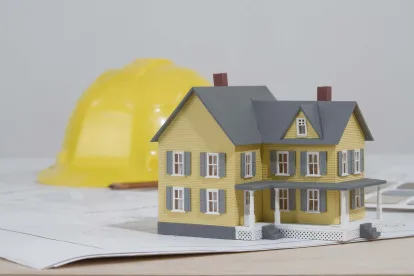Businesses that bid on public construction projects in Ohio will want to keep an eye on Senate Concurrent Resolution 25(SCR 25). Just passed by the Ohio Senate, this resolution seeks to prevent Ohio's state agencies and government entities from using the U.S. Green Building Council's (USGBC) Leadership in Energy and Environmental Design “LEED v4” green building system in public construction because it “fails to conform to recognized voluntary standard development procedures.”
LEED is a national initiative of the USGBC, a private organization that sets standards for evaluating environmentally friendly buildings. Ohio currently uses the LEED standards for evaluating the efficiency of publicly-funded buildings in Ohio and has more green schools than any other state, with more than 120 LEED-certified schools.
LEED v4, the latest update of the LEED standard, was adopted by the USGBC in July of 2013. Critics claim that LEED v4 does not conform to American National Standards Institute (ANSI) design standards and eliminates the use of a number of safe and effective building materials, impacting numerous industries in Ohio that produce insulation foam, vinyl, and flooring.
Some key points from SCR 25 include (view full text):
-
“The U.S. Green Building Council’s (USGBC) LEED v4 green building system fails to conform to recognized voluntary standard development procedures, including but not limited to American National Standards Institute (ANSI) procedures, and fails to base environmental and health criteria on risk assessment methodology…”
-
A resolution that “the use of green building rating systems, codes, and other standards that have been developed pursuant to ANSI procedures be presumptively deemed to be open, transparent, and voluntary consensus standards suitable for Ohio government use…”
-
A resolution that “the LEED v4 green building rating system no longer be used by Ohio’s state agencies and government entities until the USGBC conforms its system development to the ANSI voluntary consensus standard procedures as confirmed by ANSI or until the state, after an opportunity for public comment and participation, incorporates the LEED v4 system by reference, in whole or in part, into the administrative rules for state agency or government entity building standards…”
-
A resolution that the Office of Energy Services within the Ohio Facilities Construction Commission “continue to incorporate energy efficiency and sustainable design features into approved school projects through the use of alternative green building rating systems, codes, and standards other than LEED v4 …”
SCR 25 suggests that Ohio use the ANSI procedures instead of LEED v4 because they are “open, transparent, and voluntary consensus standards” that are “properly grounded in science and include the use of environmental and health criteria that are based on risk assessment methodology generally accepted by applicable scientific disciplines.”
Other states with similar anti-LEED legislation include North Carolina, Florida, Maine, Georgia, Mississippi and Alabama. If SCR 25 passes, no state project in Ohio will be eligible for LEED registration/certification after summer 2015, when LEED v4 goes into effect. While this legislation still needs approval from the Ohio’s House of Representatives and governor before taking effect, this is a significant development to watch and take into consideration in planning future public construction projects in Ohio.



 />i
/>i

